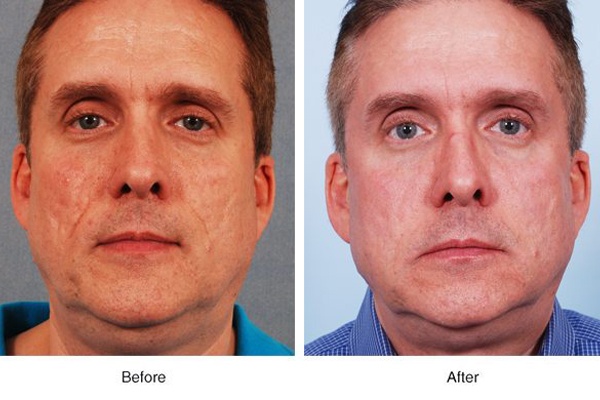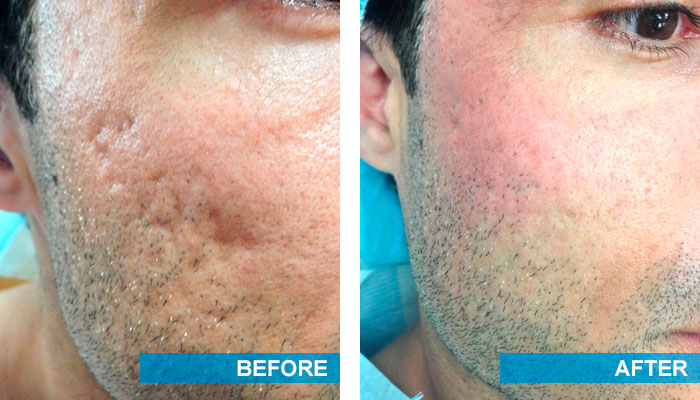Checking Out Skin Disease: Dealing With and determining Acne Scars for Healthier Skin
Acne scars stand for a substantial worry for individuals seeking to keep healthy and balanced skin, as they can affect both look and self-worth. Comprehending the various sorts of scars, from atrophic to hypertrophic, is vital for identifying appropriate therapy choices. While professional treatments like chemical peels and microneedling can be efficient, the importance of individualized care plans can not be overemphasized. Furthermore, preventative procedures play an important function in decreasing future scarring. As we check out these facets, one have to think about just how the ideal approach can cause transformative results.
Understanding Acne Marks
Recognizing acne scars is vital for anyone who has actually experienced extreme acne, as these marks can have a long lasting influence on both physical look and psychological wellness. When the skin undergoes inflammatory reactions during active acne lesions, acne marks create. The extent of scarring is commonly affected by elements such as the kind of acne, its duration, and private skin features.
The body's natural healing process can cause either atrophic marks, which appear as clinical depressions in the skin, or hypertrophic scars, which are elevated and result from overflow of collagen. Furthermore, the mental toll of acne marks should not be undervalued; many individuals report sensations of embarrassment, anxiousness, and reduced self-worth. This emotional concern can impact social interactions and general lifestyle.
Dealing with acne scars calls for an extensive understanding of their formation and influence. Recognition of the possibility for lasting effects connected with unattended marks can inspire individuals to seek appropriate therapies. Early treatment and efficient management techniques can considerably improve skin look and improve mental resilience, stressing the value of comprehending the complexities surrounding acne marks.
Kinds Of Acne Marks
Acne marks can be categorized right into distinct kinds, each displaying distinct qualities and requiring certain treatment approaches. The key sorts of acne scars consist of atrophic, hypertrophic, and keloid scars.

Hypertrophic marks, on the other hand, are raised over the skin level and are the result of too much collagen production throughout the recovery procedure. They normally continue to be within the boundaries of the original acne lesion. Keloid scars are comparable but prolong beyond the initial injury website, creating bigger, raised areas that can be itchy or excruciating.
Comprehending these kinds of scars is necessary for picking appropriate treatment options. Different marks might react better to particular therapies, such as laser treatments, fillers, or surgical interventions, emphasizing the significance of a tailored method to acne scar administration.
Identifying Your Marks
Acne marks normally fall right into 2 categories: atrophic and hypertrophic marks. These can even more be classified right into ice-pick scars, boxcar scars, and rolling marks, each displaying distinct features and needing different strategies for analysis - acne treatment for sensitive skin.
Hypertrophic scars, on the various other hand, are increased and take place because of excessive collagen production during the recovery procedure. Acknowledging the certain functions of your scars-- such as structure, deepness, and width-- is essential for appropriate recognition. Furthermore, take into consideration the distribution of marks throughout your skin, as this can indicate the intensity and duration of the acne condition.
Involving with a dermatologist can supply valuable insights right into the nature of your scars, helping in the distinction between different kinds. A comprehensive understanding of your marks will inevitably lead to a much more customized and reliable treatment plan, making certain a clearer and much healthier skin.
Treatment Choices Readily Available
Recognizing the specific sort of acne scars present on your skin lays the foundation for discovering efficient treatment choices. Usual sorts of acne marks consist of atrophic (depressed), hypertrophic (raised), and post-inflammatory erythema.
For atrophic scars, options such as chemical peels, microneedling, and laser resurfacing are commonly utilized. Chemical peels off use acids to get rid of the external layer of skin, advertising brand-new cell development. Microneedling entails little needles that develop micro-injuries, boosting collagen manufacturing. Laser resurfacing targets harmed skin cells, boosting appearance and tone.
Hypertrophic scars can be treated with corticosteroid shots to flatten the scar or laser therapy to minimize soreness and boost appearance. acne treatment for sensitive skin. Silicone gel sheets and pressure dressings may also assist in taking care of elevated marks
Additionally, facial fillers can momentarily complete depressions from atrophic scars, while medical excision may be ideal for severe situations. Each therapy choice has its considerations and advantages, making it necessary to speak with a skin specialist. They can offer customized recommendations based upon the type and severity of your marks, in addition to your skin type and total health and wellness.
Tips for Prevention
Reliable prevention techniques can considerably lower the likelihood of creating acne scars. The very first step is to maintain a constant skincare regimen that includes mild cleansing, peeling, and moisturizing. Making use of non-comedogenic products aids avoid clogged up pores, which can worsen acne. Additionally, integrating topical treatments consisting of salicylic acid or benzoyl peroxide can effectively take care of breakouts and lessen swelling.
Preventing need check my blog to stand out or pick acne lesions is critical, as this can result in much deeper skin damages and increase the danger of scarring. Instead, take into consideration utilizing a cool compress or over the counter therapies my response to reduce swelling and redness.
Sun defense is an additional vital element of avoidance; ultraviolet (UV) rays can dim marks and hinder the healing process. Using a broad-spectrum sun block with at the very least SPF 30 daily can protect the skin and advertise also recovery.
Last but not least, preserving a balanced diet regimen rich in antioxidants, minerals, and vitamins supports skin health and wellness and healing. Staying hydrated and taking care of tension degrees can also play a substantial function in lowering acne flare-ups. By executing these approaches, individuals can dramatically lessen their possibilities of creating acne scars.

Final Thought
In conclusion, understanding and identifying acne marks is important for effective More Info treatment and attaining much healthier skin. Numerous kinds of acne scars, including atrophic and hypertrophic scars, require certain treatments customized to specific requirements.
The body's all-natural healing process can result in either atrophic marks, which appear as depressions in the skin, or hypertrophic marks, which are increased and result from overflow of collagen. They are further divided into three subtypes: ice pick scars, boxcar marks, and rolling scars. Acne scars generally fall into 2 groups: atrophic and hypertrophic marks. These can better be categorized right into ice-pick scars, boxcar scars, and rolling scars, each showing distinctive attributes and requiring different methods for assessment.
Different types of acne marks, including atrophic and hypertrophic scars, necessitate specific treatments customized to specific requirements.